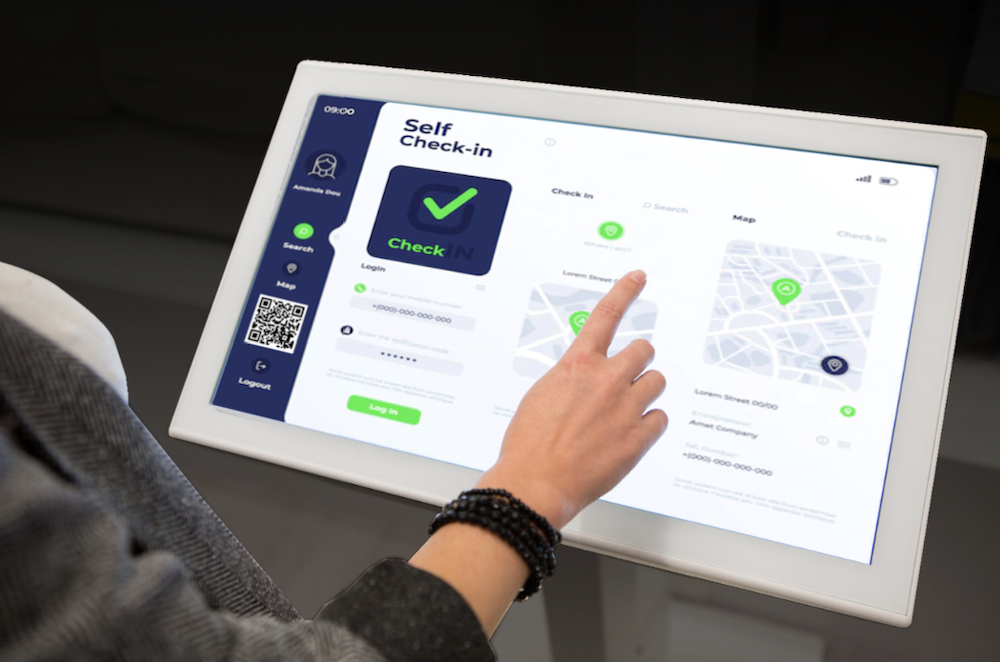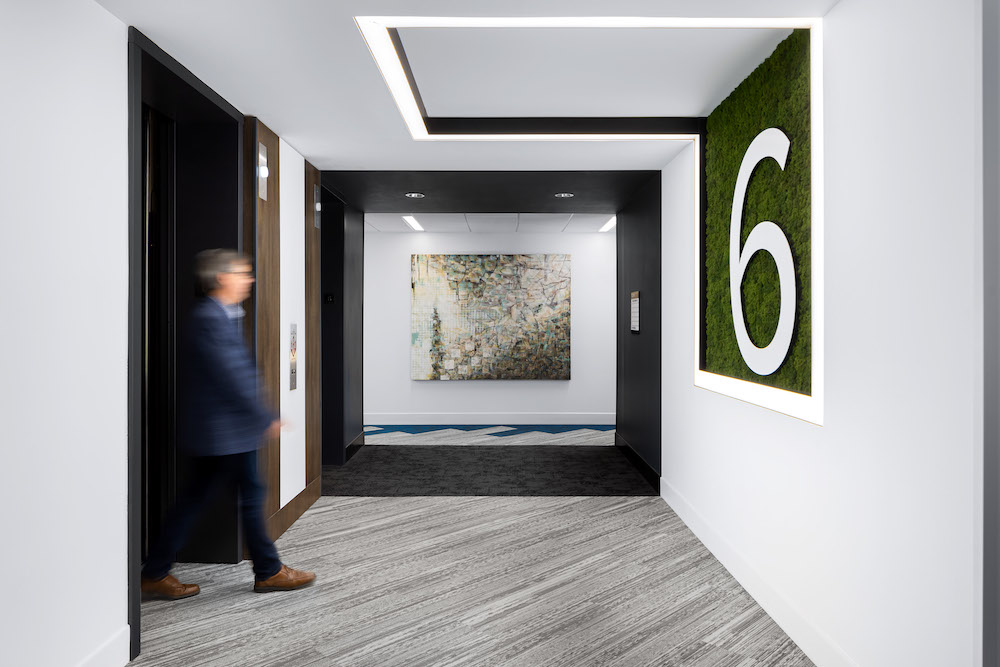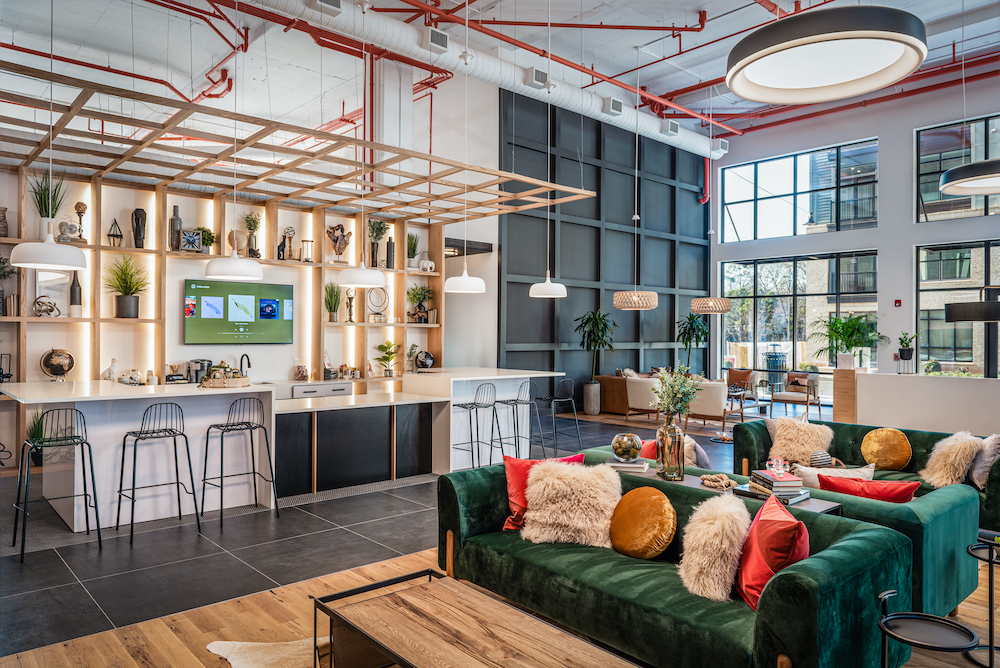Lia Malihi and Elizabeth Muscroft of Cooper Carry share how to create intuitive, purposeful, and comfortable reception areas.

While the office reception area has long been considered the first stop – and first impression – for those visiting a new workplace, its function has evolved over the years. When we consider the traditional office environment, what often springs to mind is an image of a receptionist who knows exactly how to get where we need to go. They’re able to answer questions like, “Where should I sit?”, “Does anyone know I’m here?”, and even, “Where’s the bathroom?”, before coordinating an elevator to get you to your destination in time for your meeting.
Today, workplace designers are considering alternate options for guiding visitors through the modern office, especially as most buildings no longer employ a full-time receptionist. As the traditional lobby fades into distant memory, we find ourselves walking through the front doors of the future — into a new era of the reception area. Before we’ve even encountered another person, entry spaces that are purposefully designed to simplify the wayfinding process are there to greet us.
From enhanced branding to elevated hospitality, here are a few elements that are synonymous with the receptionist of the future, where the lobby design does all the talking.
Branding (Where Am I?)
Despite there no longer being a person behind a desk to welcome you to the office building, you can still be confident you’re in the right place. How so? Through a strategic branding approach that immediately establishes a company’s presence and culture as soon as a visitor walks through the door.
At the heart of branding is intention – the intent to communicate company values, the intent to make an imprint, the intent to meaningfully engage. As designers, we use color, materials and graphics as a way to establish brand presence and company culture. This could manifest as the use of bright colors on the entry portal that evokes more of a friendly company feel or a nod to the geometry of a logo that shows up in the built environment. It may even look like a custom experiential graphic that outlines the company’s outreach in the local community, which could be a great sign for a prospective hire coming in for an interview who values corporate responsibility.
When the team at Keysight, a California-based software company, was looking to design its new office space at the Coda building at Tech Square in Atlanta, expressing the firm’s brand was a top priority. Serving as an incubator for ideas and solutions to fuel a wide range of technology innovations, Keysight wanted a way to showcase its business as soon as people entered the reception area.
A product display shelf in the lobby area features interactive screens that offer details about the history of Keysight and information about the latest products the company has designed. A primary feature of Keysight’s brand is its logo, which displays a wave formation. The design team used this wave as a unifying element throughout the space, where it takes shape in the light fixture and graphics.

Arrival (What Do I Do Here?)
For the more introverted visitors, how do they make their presence known if no one is there to make the call or send a quick message that you have arrived? No one wants to be the person peeking around the corner from the reception area, hoping to make fleeting eye contact with a busy employee who will stop what they’re doing to check you in. This is where creating a tech-enabled lobby works wonders.
Whether through a QR code scanned as you enter, or a dedicated arrival kiosk that can do everything from alerting your host to printing a visitor badge, implementing technology in the lobby ensures guests are not standing around waiting for someone to notice them. Consider the digital check-in process at the airport, where you can either complete the process on your mobile device or head to a kiosk at the airport to print your boarding pass and baggage ticket. These innovations have simplified the arrival process at the airport and can have the same impact on the workplace.
The digital check-in experience at the office will be aided by new, all-in-one tools that are able to handle a variety of needs, such as the Media Unit from reception furniture brand, Isomi. Products like these will have the ability to assist with self check-in and ding those in wait that their visitor has arrived, provide a map of the building, or even manage health evaluations.

Wayfinding (Where Do I Go?)
Without a dedicated receptionist to guide us, environmental graphics are the perfect solution for improving wayfinding from the point of entry to the final meeting place. They also offer yet another opportunity for visitors to connect and interact with a space in the way designers intended.
Signage is a time-tested tool that has evolved beyond simple text on a plaque. At the Commons at Lake Hearn, the design team deployed a variety of contemporary wayfinding strategies that make getting from point A to B a trouble-free experience. Elements including brand-infused supergraphics, directional signage, digital directories and color-blocking were all used to streamline travel throughout the space.
Hospitality (Can I Sit Here?)
Of course you can! Entry and reception areas are upgrading the guest experience by introducing comfortable lounge seating and collaborative hubs in traditional office environments. Designers are creating multi-functional lobby areas to establish inviting spaces for visitors to wait and relax before a big meeting.
Hospitality design strategies that implore guests to linger longer are increasingly being replicated in workplace design. In hotels, the adoption of multi-purpose lobbies that blend function with eateries and bar experiences have been successful in appealing to evolving traveler tastes.

This can take shape in the office lobby, too, from a cozy charette of soft seating punctuated by laptop tables to allow guests to wrap up any last minute work to implementing coffee bars. The reception area can even double as the primary café for the office, making it less of a formal waiting spot and into a vibrant space where the activity never stops, such as the lounge area at Solis Carraway, an apartment complex in Chamblee, Georgia, with a ground-floor lounge that doubles as a coworking space.
Although the office lobby will likely continue to transform, the most crucial aspect of the entry area is designing a place that is intuitive, purposeful, and comfortable. Whether the receptionist ever makes a comeback, the built environment should always be capable of setting the stage for an engaging and productive experience for visitors.

